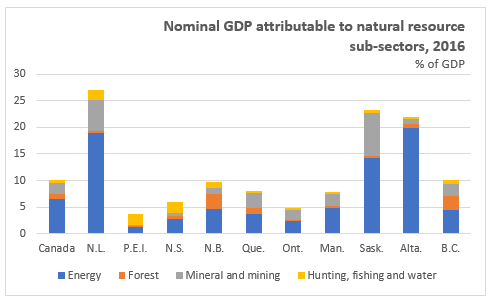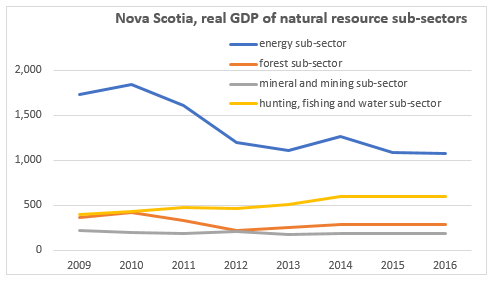The Economics and Statistics Division maintains archives of previous publications for accountability purposes, but makes no updates to keep these documents current with the latest data revisions from Statistics Canada. As a result, information in older documents may not be accurate. Please exercise caution when referring to older documents. For the latest information and historical data, please contact the individual listed to the right.
<--- Return to Archive
For additional information relating to this article, please contact:
June 27, 2018PROVINCIAL AND TERRITORIAL NATURAL RESOURCE INDICATORS, 2009 to 2016 Statistics Canada has produced Provincial and Territorial Natural Resource Indicators (PTNRI) as an extension to the Natural Resources Satellite Account. The account defines natural resource activities as products and services originating from naturally occurring assets used in economic activity. The assets include mineral and energy resources, water, natural timber, aquatic and other natural biological resources but not agriculture. The indicators are built on the production/activity of the natural resource (including associated primary manufacturing) and not on an industry classification. The natural resource indicators include production, GDP, imports, exports and employment.
The natural resources sector accounted for 10.1 per cent of national GDP in 2016. The natural resource sector accounted for over 20 per cent of the economies of Newfoundland and Labrador, Saskatchewan and Alberta, and less than 5 per cent of GDP in Prince Edward Island and Ontario. In Nova Scotia, the natural resource sector accounted for 6.0 per cent of GDP in 2016 with contributions among the sub-sectors of energy (2.7%), forest (0.7%), mineral and mining (0.5%) and hunting, fishing and water (2.1%).

Nova Scotia natural resources real GDP declined from $2.7 billion in 2009 to $2.1 billion in 2016. The energy sub-sector decreased after 2011 with natural gas extraction declining 70.4 per cent from 2010 to 2013. Closure of the Dartmouth refinery further reduced activity in the energy sub-sector. The forestry subsector saw a decline between 2010 and 2012 following the closures of pulp and paper mills. Real GDP of the hunting, fishing and water sub-sector has seen growth of 53.6 per cent since 2009.

Source: Statistics Canada: Provincial and territorial natural resource indicators, 2009 to 2016
<--- Return to Archive